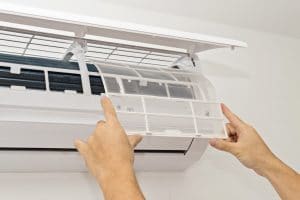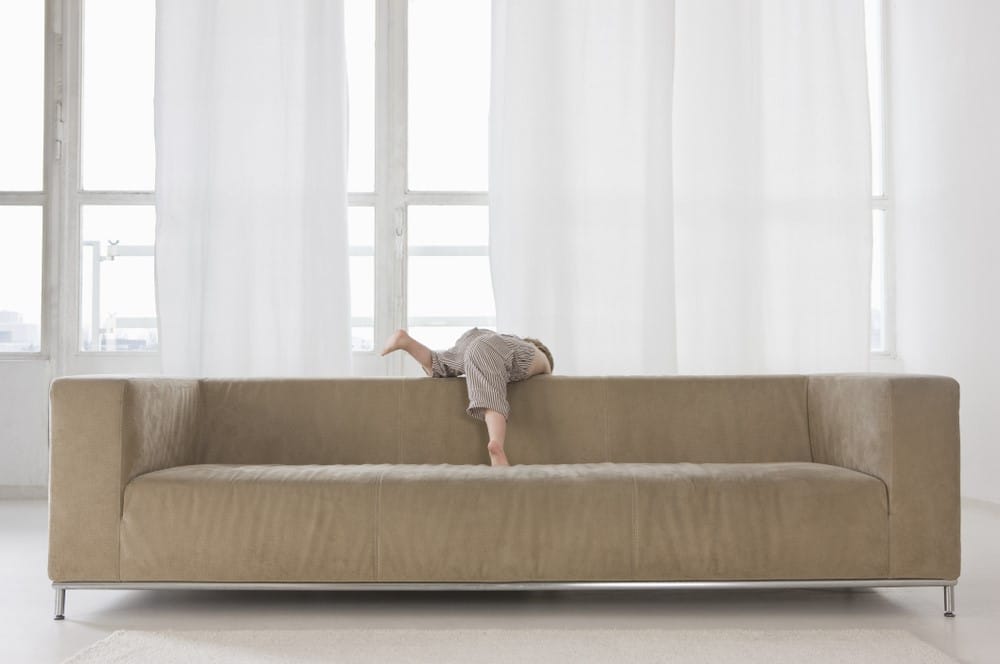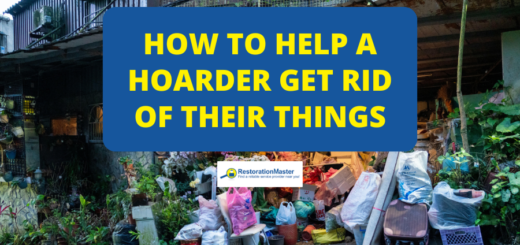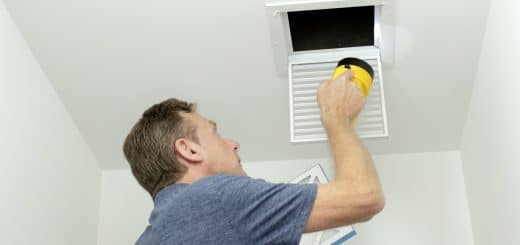A Parent’s Guide to Ensuring Better Air Quality for Infants & Children
Indoor air qualityIndoor air quality (IAQ) refers to the condition of the air ... More is of the utmost importance, especially in homes with infants and children whose lungs are still growing and developing. In fact, the Environmental Protection Agency says that the concentrations of some pollutants are two to five times higher indoors than outdoors. Fortunately, there are ways to increase your indoor air qualityIndoor air quality (IAQ) refers to the condition of the air ... More for your infants’ and children’s sake. Read below to learn more!
1. Air Quality Testing
Certain tests and monitors can detect harmful airborne materials such as moldMold is a type of fungus that grows in damp or humid conditi... More, radonRadon is a naturally occurring radioactive gas that can accu... More, and carbon monoxide in your home. There are in-home kits and alarms that can be purchased and installed, but many prefer to have their home’s air quality professionally inspected periodically. A professional inspection will be more accurate, thorough, and informative than a household kit. This helps provide more information so a specific course of action can be taken.
2. Ditch the Ducts
Unknown to homeowners, central-ducted HVAC systems could be decreasing their indoor air qualityIndoor air quality (IAQ) refers to the condition of the air ... More. Dust, dirt, debris, and other allergens build up in the ducts over time and are spread throughout the house. This irritates the respiratory systems of residents, especially children who may already suffer from allergies or asthma. Fortunately, this is preventable by switching to a ductless mini split.
Ductless mini splits are a highly efficient HVAC system consisting of an outdoor condenser connected to an indoor air handling unit by a series of copper wires and pipes. The lack of ductwork not only simplifies their installation and maintenanceMaintenance is the routine care, inspection, and repair of a... More process but eliminates the spread of harmful airborne particles throughout the house.
They also act as air filters, purifiers, and dehumidifiers while simultaneously heating and cooling your home. Ductless mini splits remove any harmful airborne particles such as dirt, dust, pet hair, and other allergens to improve your home’s indoor air qualityIndoor air quality (IAQ) refers to the condition of the air ... More. They also remove moisture from the air to deter moldMold is a type of fungus that grows in damp or humid conditi... More and mildewMildew is a type of fungus that grows on damp surfaces, typi... More growth. This creates a more comfortable and healthy environment for your children.
Be sure to regularly maintain your mini split’s air filter for sustained efficiency. Most filters should be removed and wiped with a cloth every two to four weeks and replaced annually. However, filter maintenanceMaintenance is the routine care, inspection, and repair of a... More and replacement is dependent on the specific filter type and machine’s usage level.
3. Radiant Heating
A radiant heating systemRadiant heating system is a heating system that delivers war... More is another alternative to a central-ducted HVAC system. Radiant heating systems feature panels installed under the floor, ceiling, or wall. The panels then heat the room’s objects instead of the air, and this heat is transferred to the room’s occupants for optimal thermal comfort.
Radiant heating has been shown to increase your home’s air quality because the lack of condensation limits the potential for moldMold is a type of fungus that grows in damp or humid conditi... More and mildewMildew is a type of fungus that grows on damp surfaces, typi... More growth. It also does not circulate dust, dirt, debris, and other airborne particles like a ducted HVAC system.
4. Increase Ventilation
Bringing in outdoor air and ventilating your home is crucial to improving the indoor air qualityIndoor air quality (IAQ) refers to the condition of the air ... More. The circulating air helps prevent the buildup of harmful airborne particles that can cause allergies, irritation, and potential illnesses. Opening windows or doors and turning on ceiling fans are two excellent ways to increase your home’s ventilationVentilation is the process of exchanging or circulating air ... More.
VentilationVentilation is the process of exchanging or circulating air ... More is especially important during certain pollutantA Pollutant is a substance that contaminates air, water, or ... More producing activities. For example, cooking can generate high amounts of steam, smoke, fumes, and odors that can linger and irritate children. Installing a kitchen vent (also known as a range hood) above the stove helps contain and remove any of the aforementioned byproducts of cooking.
5. Non-Toxic Cleaning Products
Keeping a clean house while raising young children can be quite the struggle, as messes seem to pile up one after another with no end in sight. However, regular home cleaning is crucial because it leads to increased indoor air qualityIndoor air quality (IAQ) refers to the condition of the air ... More.
When cleaning your home, be sure to use non-toxic cleaning products. Some cleaning products are made with harmful pesticides, chemicals, and additives. The prolonged buildup of these materials on surfaces and in the air can decrease the air quality while irritating your child’s respiratory system. Fortunately, there are many non-toxic cleaning products, available either online or in stores, that will do an excellent job of keeping your home clean while improving indoor air qualityIndoor air quality (IAQ) refers to the condition of the air ... More.
6. Carpet Cleaning
The carpets in homes with children take a beating between various spills and tracking mud or dirt in from the outdoors. Harmful materials such as dirt, dust, debris, and more can build up on carpets over time and even embed themselves deep in the carpet fibers. Over time, they can be released into the air, which will decrease your home’s air quality. Vacuuming regularly will not only remove stains but help improve your indoor air qualityIndoor air quality (IAQ) refers to the condition of the air ... More by removing surface level dust, dirt, bacteria, and more.
Annual or semi-annual carpet cleaning is very important in homes with infants and small children. While vacuuming cleans the carpet’s surface, it is not powerful enough to remove certain harmful materials that are embedded deep in the carpet fibers. The professional carpet cleaning will eliminate bacteria and other harmful materials that a household vacuum cannot reach, and it will keep your carpet looking great for years to come!
7. Indoor Plants
Indoor plants are another excellent way to ensure better air quality in your home. Certain plants can kill off bacteria and toxins while preventing moldMold is a type of fungus that grows in damp or humid conditi... More and mildewMildew is a type of fungus that grows on damp surfaces, typi... More growth. Aloe Vera, Dragon Tree, and English Ivy are some of the many beneficial plants that can help create a better indoor environment for your children.
In conclusion, taking the following steps to improve indoor air qualityIndoor air quality (IAQ) refers to the condition of the air ... More will have both short- and long-term benefits for your children. Not only will it create a more comfortable environment, but it will decrease their risk of disease and exposure to allergens.















